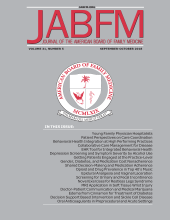To the Editor: Dr. Brinn1 is right to point out that that the walk-in psychiatry model we developed at Brigham Health2 fails to manage waiting room times in a way that proactively engages patients who might otherwise leave before receiving treatment. A trade-off was made between risking all the pitfalls that Dr. Brinn described and the potential consequences of prolonging lag times for a scheduled appointment in a traditional model, including a higher risk of missing that appointment,3 decreased patient satisfaction,3 and in some cases a higher mortality risk.4 Neither model is so seamless that it works well enough for all patients, and measuring and reducing wait times is the right next step.
It is a shame that most health systems have been so slow to adapt to the waiting time problem when other industries figured it out long ago. Restaurants that do not take advance reservations find a variety of ways to keep prospective diners occupied until their tables are ready or else they would leave. We sometimes send our patients to lunch. Haircutting chains have smartphone apps that allow prearrival check-ins. We do not. Some fashionable places still have a line that snakes around the block on most nights, in which people wait hours for something they believe they cannot do without. Our clinic is not that fashionable, and our patients deserve better service, but people have been willing to wait because they need what we offer, and they have nowhere else to go.
Notes
To see this article online, please go to: http://jabfm.org/content/33/1/155.full.







